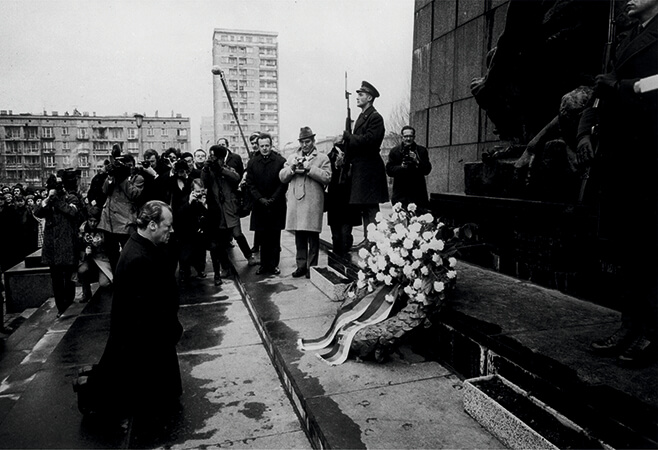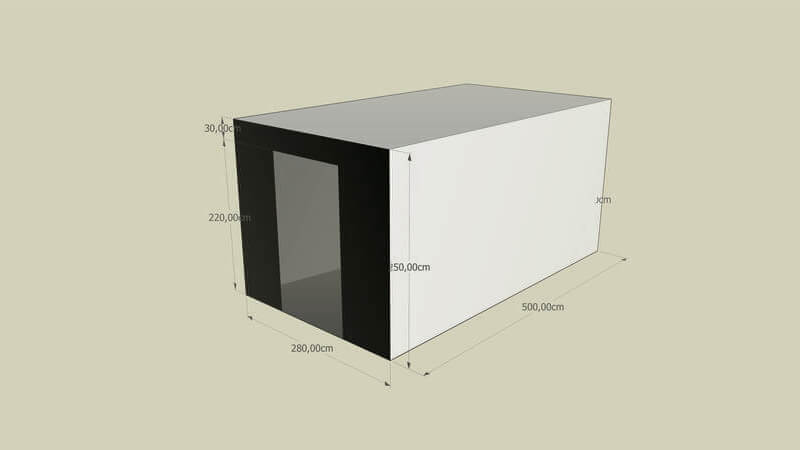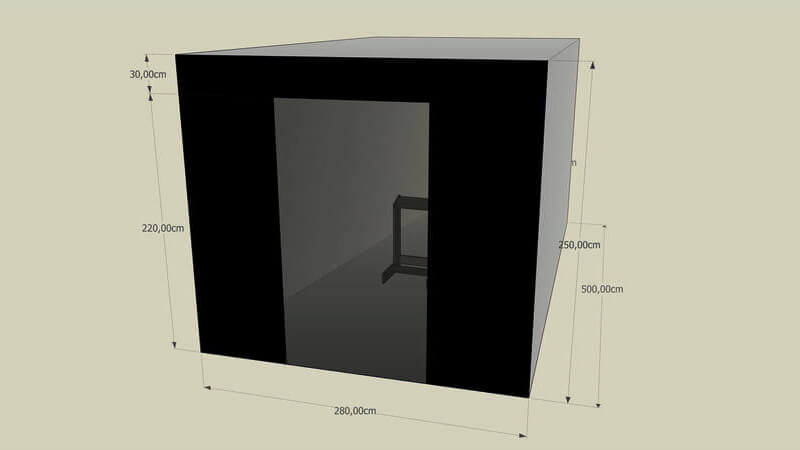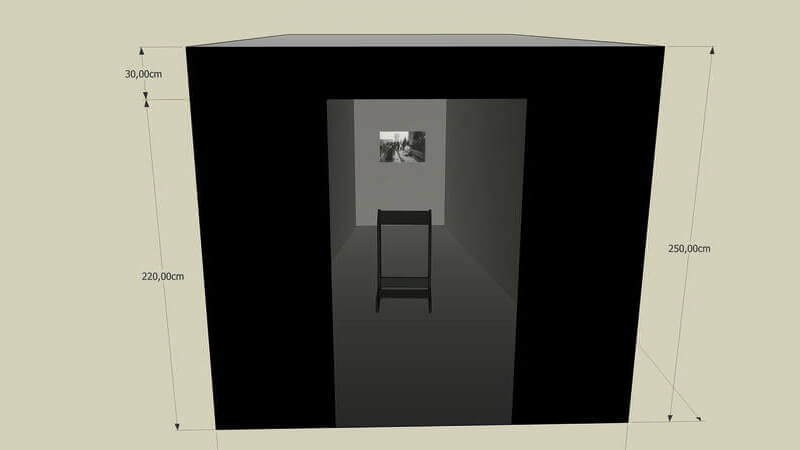The past that does not want to pass away
| title: |
The past that does not want to pass away the declamation of Ernst Nolte's text: On the past, which does not want to end, in the performance of Jürgen Kaumkötter, archival photography - Willy Brandt at the Monument to the Ghetto Heroes during his visit to Warsaw on December 7, 1970, bpk - Bildagentur für Kunst, Kultur und Geschichte, |
| year: | 2015 |
| dimensions: | 500/280/280 cm |
| technique: | installation with sound |
| description: | The installation presents a specially designed, small space where an archival copy has been placed photographs in the binding and sound recorded today. Photography, obtained from Bpk Photo Agency – presents the moment of kneeling of Willy Brandt (German: Kniefall von Warschau) - as the historical gesture of the Federal Chancellor of the Federal Republic of Germany at the Monument to the Ghetto Heroes during his visit to Warsaw on December 7, 1970, the first official visit of the Chancellor of West Germany in post-war Poland. The second element of the work is sound recorded earlier and reproduced from the speakers during the exhibition - excerpts from the text of the historian Ernst Nolte. The title of the work refers to the famous article by Ernst Nolte, Vergangenheit, die nicht vergehen will (published on Frankfurter Allgemeine Zeitung, June 6, 1986). Installation with sound refers to the idea of reconciliation, forgiveness in the context of existing war crimes and guilt. Willy Brandt's gesture was exceptional in this case, going beyond the protocols set out in the protocol, interpreted as a public confession of guilt and recognition of moral responsibility on behalf of the German people towards the murdered Jews, and a tribute to all those murdered by the Nazi regime. The visual evocation of this symbolic gesture through archival photography is a very important element of the installation, as a turning point in the politics of memory, the strategy of forgiveness, reconciliation and ethics. |
© Dorota Nieznalska 2009-2023 | privacy policy
website implementation: Brandrei.com



